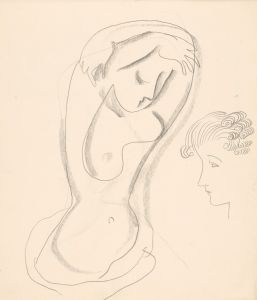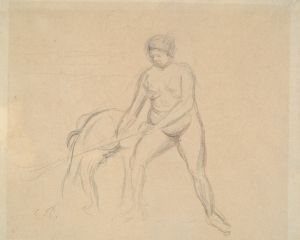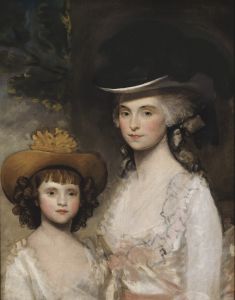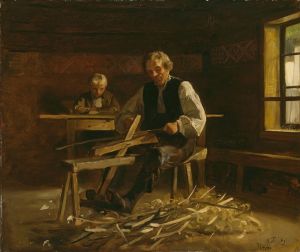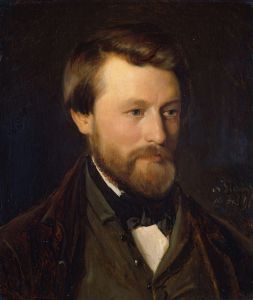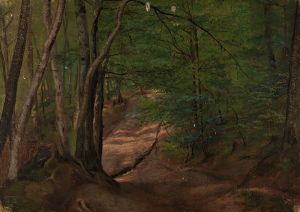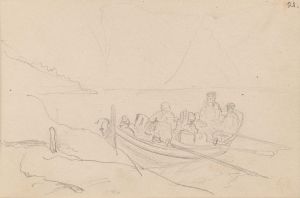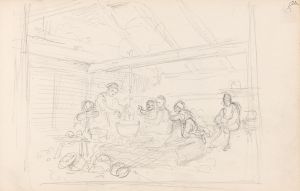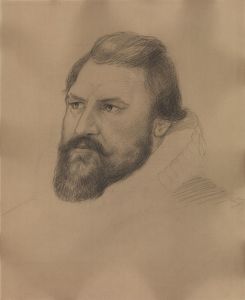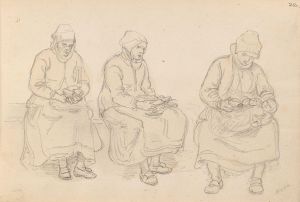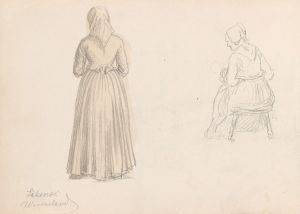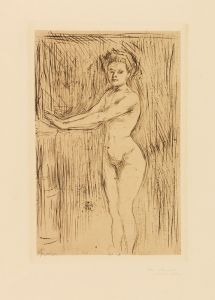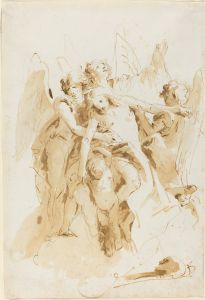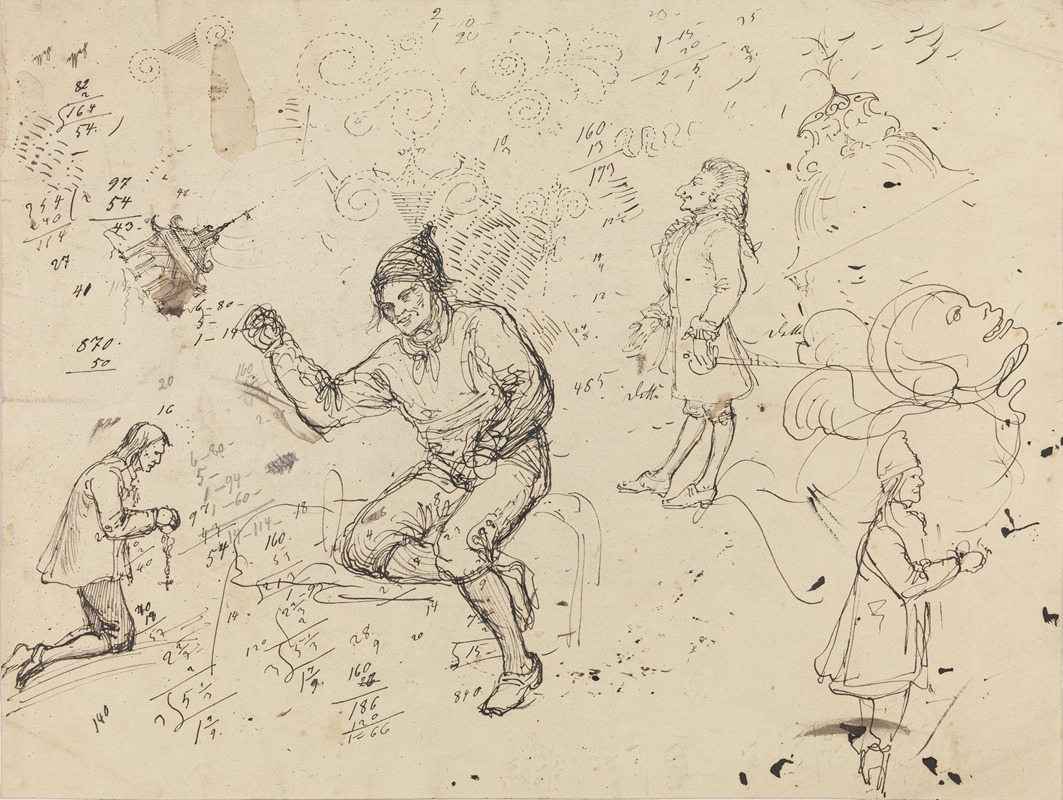
Figurstudier
A hand-painted replica of Adolph Tidemand’s masterpiece Figurstudier, meticulously crafted by professional artists to capture the true essence of the original. Each piece is created with museum-quality canvas and rare mineral pigments, carefully painted by experienced artists with delicate brushstrokes and rich, layered colors to perfectly recreate the texture of the original artwork. Unlike machine-printed reproductions, this hand-painted version brings the painting to life, infused with the artist’s emotions and skill in every stroke. Whether for personal collection or home decoration, it instantly elevates the artistic atmosphere of any space.
Adolph Tidemand was a prominent Norwegian painter in the 19th century, known for his detailed and culturally rich depictions of Norwegian life and traditions. One of his works, "Figurstudier" (translated as "Figure Studies"), showcases his skill in capturing human figures with precision and sensitivity. Although specific details about this particular painting are scarce, Tidemand's oeuvre provides context for understanding its significance.
Tidemand was born on August 14, 1814, in Mandal, Norway. He studied at the Academy of Art in Copenhagen from 1832 to 1837 and later continued his education in Düsseldorf, Germany, which was a significant center for art during that period. The Düsseldorf School of Painting, known for its detailed and realistic style, greatly influenced Tidemand's artistic development. His time in Düsseldorf allowed him to refine his technique and focus on themes that would define his career.
Throughout his life, Tidemand was deeply interested in Norwegian culture and history. He traveled extensively across Norway, studying and documenting the country's rural life, customs, and traditional costumes. This dedication to capturing the essence of Norwegian identity is evident in many of his works, which often depict scenes from everyday life, folklore, and historical events.
"Figurstudier" likely reflects Tidemand's interest in the human form and his ability to convey emotion and character through his subjects. While specific information about this painting is limited, it can be inferred that it served as a study or preparatory work for one of his larger compositions. Artists often create figure studies to explore poses, anatomy, and expressions before committing to a final piece. These studies are crucial for understanding the artist's process and the development of their ideas.
Tidemand's paintings are characterized by their attention to detail and the careful rendering of textures and materials. His figure studies would have been no exception, demonstrating his commitment to accuracy and realism. This meticulous approach allowed Tidemand to create works that were not only visually striking but also culturally significant, preserving a record of Norwegian life during the 19th century.
In collaboration with fellow artist Hans Gude, Tidemand produced some of his most famous works, such as "Bridal Procession on the Hardangerfjord" (1848), which combines landscape and figure painting to celebrate Norwegian traditions. While "Figurstudier" may not be as widely recognized as some of his other pieces, it contributes to the understanding of Tidemand's artistic journey and his role in the Norwegian romantic nationalism movement.
Adolph Tidemand passed away on August 25, 1876, in Christiania (now Oslo), leaving behind a legacy that continues to influence Norwegian art and culture. His dedication to depicting the human experience and preserving national identity through art remains an essential part of his enduring appeal. Although "Figurstudier" may not be extensively documented, it is a testament to Tidemand's skill and his commitment to exploring the nuances of human expression.





